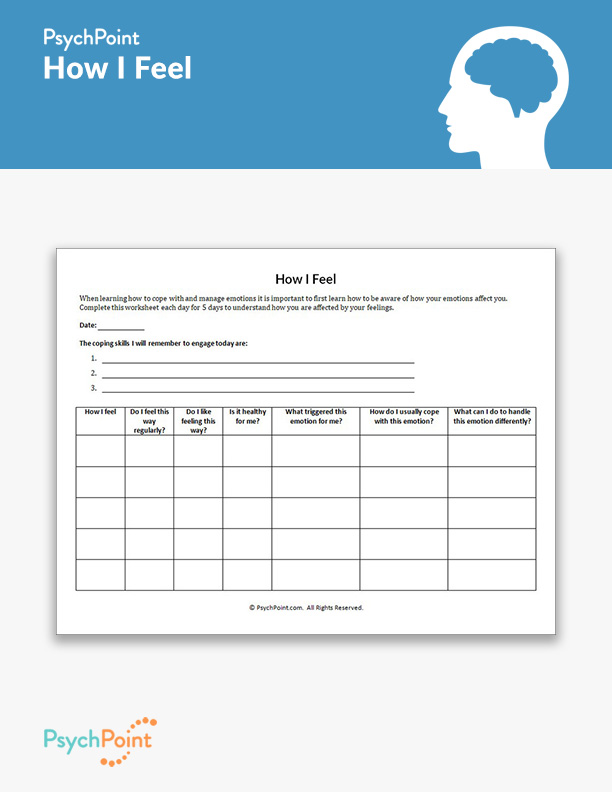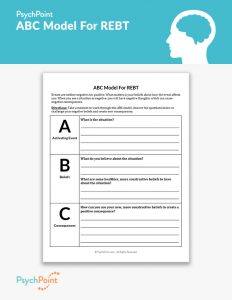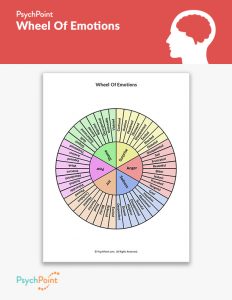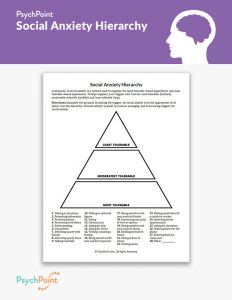How I Feel Worksheet
Worksheet updated on January 3rd, 2025

There are several reasons why a person in therapy may struggle to express their feelings. Many grow up learning that they need to silence or suppress their uncomfortable feelings, which can affect the way they relate to their emotional needs. People can also struggle to understand how they feel when they suffer from mood disorders, anxiety disorders, and trauma.
A history of trauma, abuse, rejection, abandonment, and more can all contribute to a person’s difficulty with understanding and coping with their feelings. Regardless of the circumstances, an important part of healing is teaching a client how to be in touch with what they are feeling and what they need to cope with challenging emotions.
About This Worksheet
This is a simple, straightforward worksheet intended to help a client in therapy develop a habit of being mindful of how they feel throughout the day.
The How I Feel worksheet helps clients who struggle with emotions and mood swings by allowing them a space to reflect on their feelings and learn how those feelings affect them. It also offers a space for brainstorming ways to express and handle uncomfortable or overwhelming emotions without feeling stuck.
Instructions
This worksheet is intended to be used as a homework assignment. The client is expected to use the worksheet as a daily journal to record the emotions and feelings they experience.
Introduce the worksheet by providing an overview of why people who are working on mental health and mood management need to be aware of feelings and needs throughout the day. Review the worksheet’s introduction with the client and provide the client with instructions for how to complete the exercises. Assign this worksheet as homework and review the results with the client during the next session. Please note that the client may need additional copies of the worksheet.
The How I Feel worksheet can help adolescents and adults who are learning how to be in touch with their emotions. It can be used in different therapy settings at the therapist’s discretion, including individual, group, and family counseling sessions.







